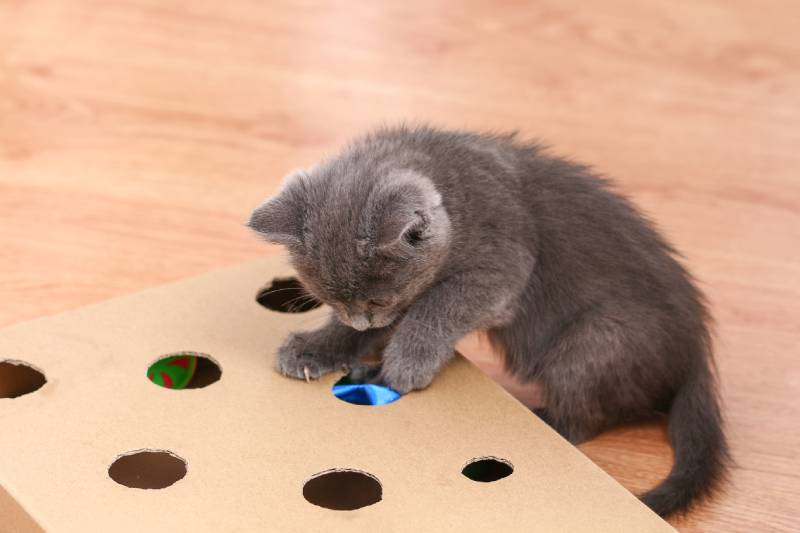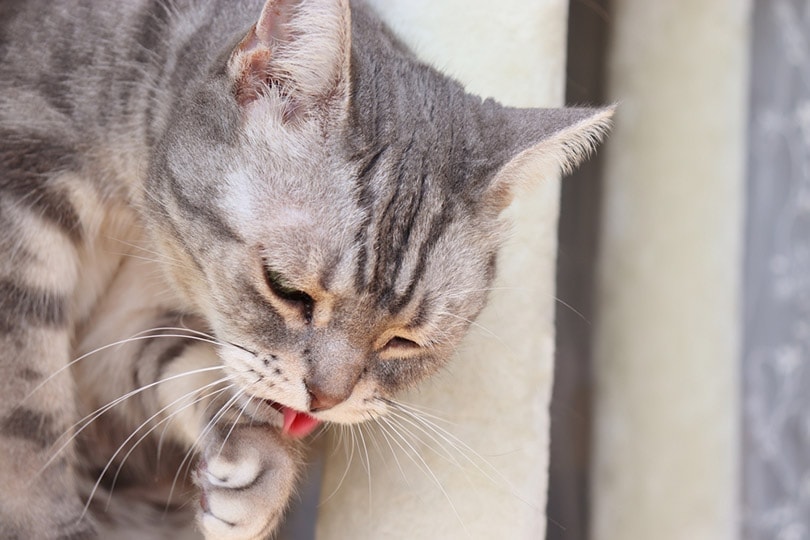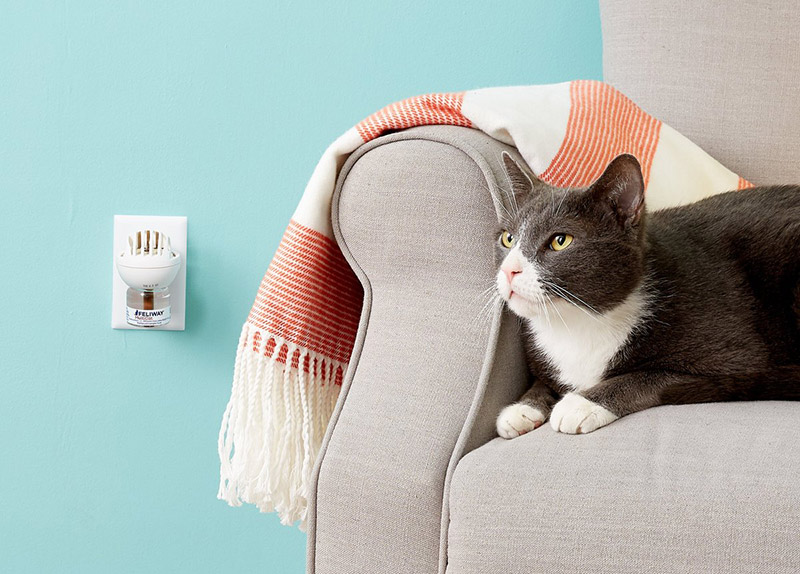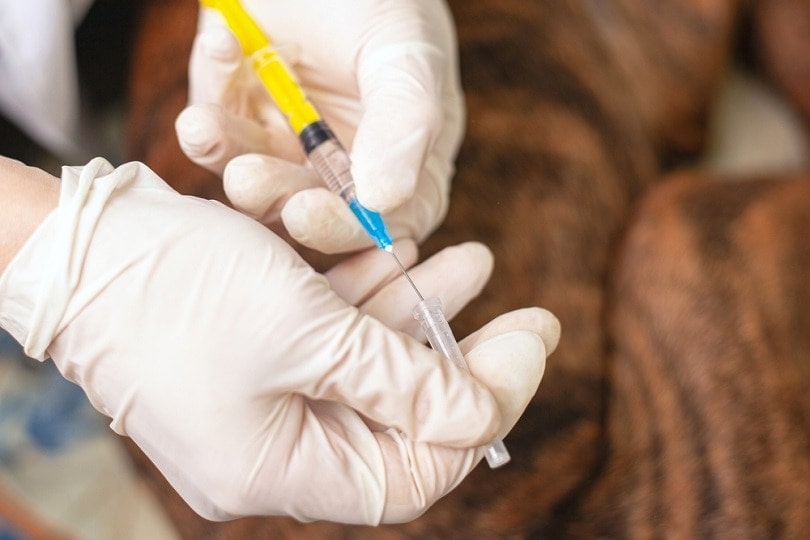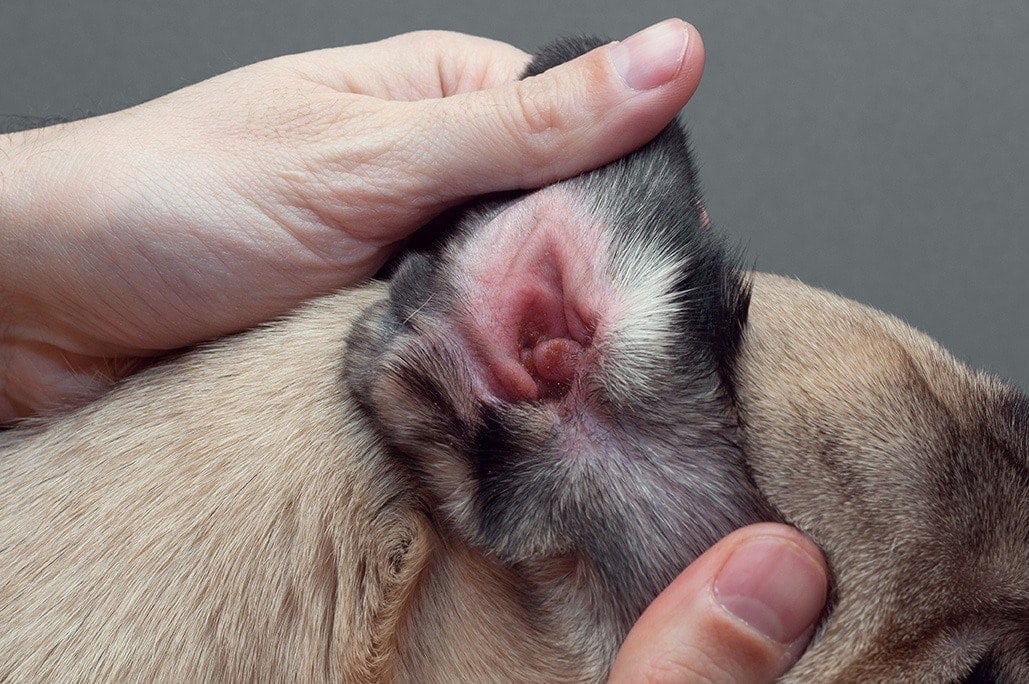How Often Should I Bathe My Cat? Care and Grooming Tips
By Ashley Bates
Updated on
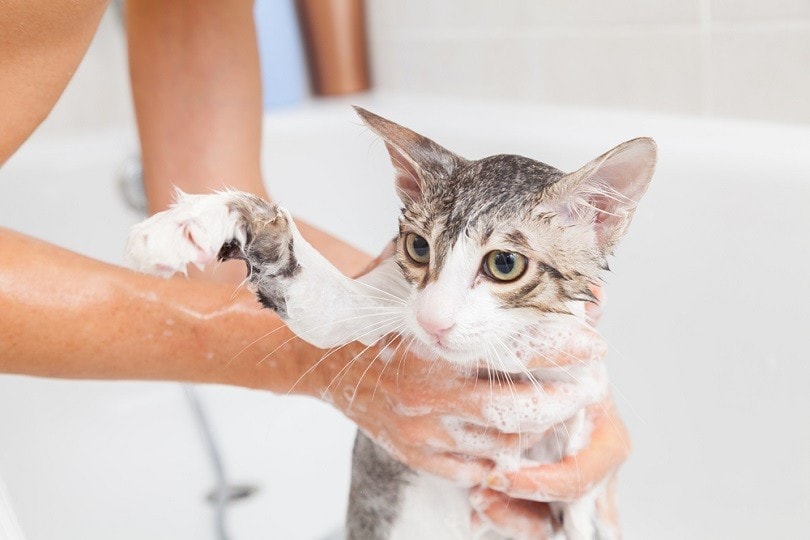
If you have ever tried, you probably know that bathing a cat isn’t an easy task most of the time. They practically act like you’re the worst person on earth every time you force them into the water—”Why human?” However, most cat owners will concur that the earlier you acclimate them, the better.
So, how often should you bathe your cat? It honestly depends on a few factors, but every 6 weeks is the average. We can go over a basic schedule you might consider based on your cat’s fur type and living arrangements.
Should You Bathe Your Cat?
Even though you might think that bathing your cat will be a never-ending task, they actually don’t need baths that often. Your cat is great at keeping up with basic hygiene. They exude self-care like no other, willingly lapping themselves clean several times a day.
If you notice, most times your cat is lounging around, they’re probably bathing themselves. Being prim and proper is just something that comes naturally to a feline. So, the good news is your work is minimal at best.
Even if you get a full-grown cat, you can introduce them to the baths. However, it would help if you acclimated them as soon as possible in order to help them get into the routine—remember, the earlier, the better.
The information given in this article is general; you should always follow the advice of your veterinarian as to how often you can bathe your cat, especially if they have any specific health conditions. The frequency may also greatly depend on a couple of factors, such as their coat length, oil production, and living situation.
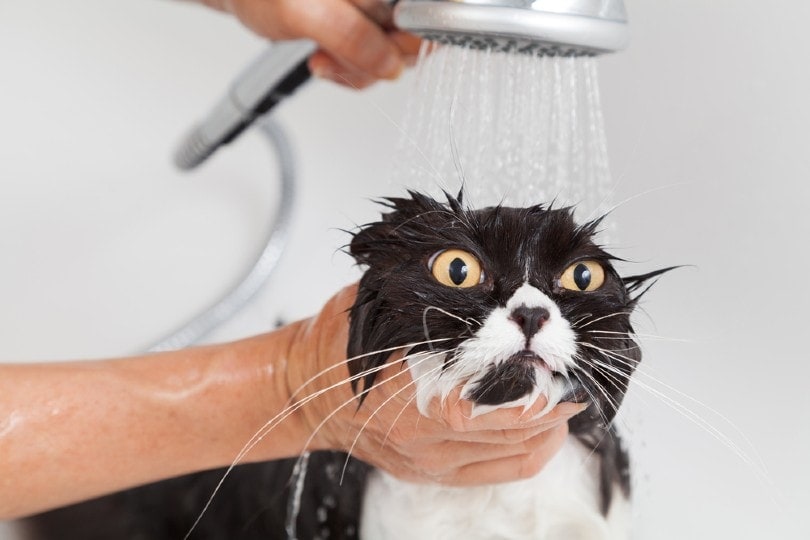
How Often Should You Bathe a Cat?
Even though the ultimate deciding factor on how often to bathe with your cat is the individual, a general rule of thumb is to wait at least six weeks between baths. Cats are real bath pros themselves. Their tongues are rough, which helps them remove loose hair and debris from their coats.
They have all the natural capabilities of keeping up with hygiene, but sometimes they need a little help. So, pay attention to any indication of uncleanliness, like greasiness, flakes or dandruff, discoloration, and dirty coats.
Keeping your pet's skin and coat clean and healthy is very important, but finding a great shampoo can be harder than the actual grooming! We love our Hepper Pet Shampoos because they makes grooming so much easier. These pH-balanced formulas are made with natural ingredients like oatmeal, cucumber, and aloe. They are free of phthalates, sulfates, and soaps and very gentle on your pet's skin. Now you just need to decide which formula is best for your fur baby! Here’s a quick guide to help you choose the right option for your pet’s next bath!
Hepper Colloidal Oatmeal Pet Shampoo
Hepper Waterless No Rinse Pet Shampoo
Natural cucumber & aloe scent
Safe for cats & dogs
Rinsing required
Free of harsh chemicals & nasty ingredients
Lathers easily
What Types of Cats Need Frequent Baths?
The amount of time you should wait in between baths depends significantly on your kitty. Here are a few factors that might play a role in how often you should lather up your feline.
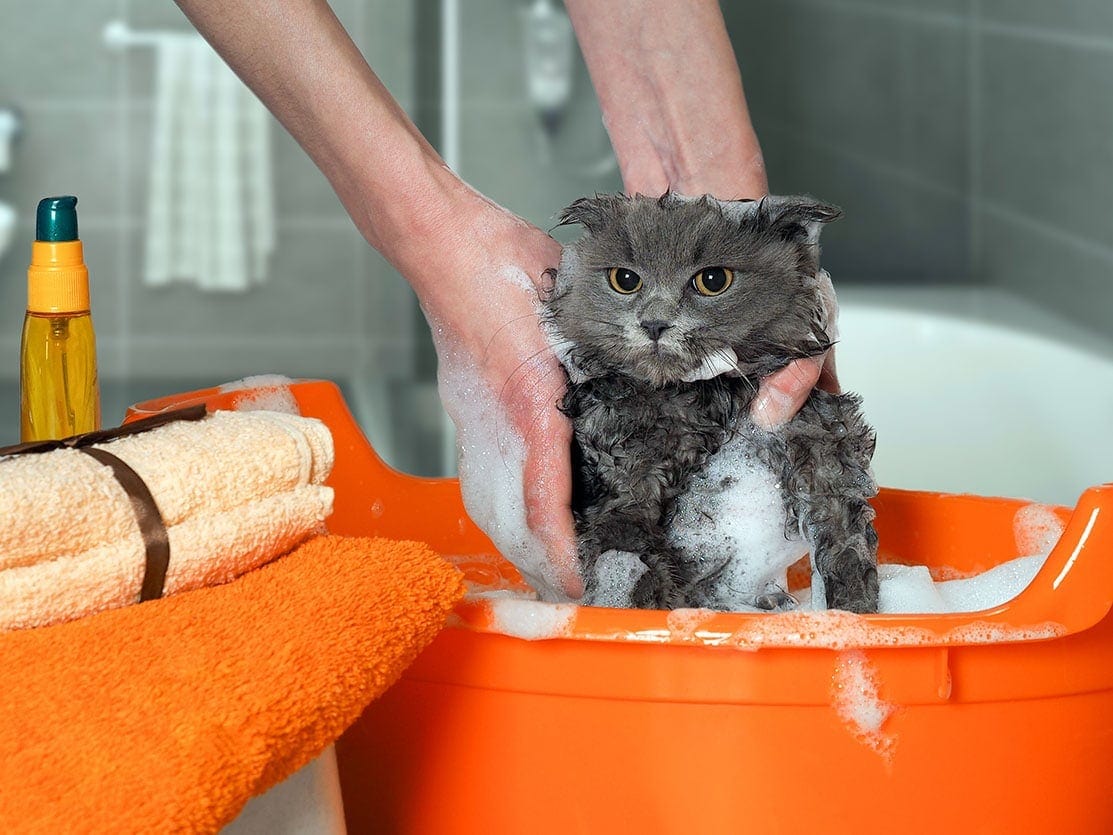
Coat Length
Long-haired cats might need frequent baths over their shorter-haired counterparts. Long hair attracts more debris and tangles—and is sometimes harder to keep clean. Because of that, they might do best with more regular baths and brushing.
Skin Type
Some cats’ skin can be relatively dry, while others have a higher oil production. If you notice that your cat feels greasy, you might want to bathe them more frequently.
However, if you notice that your cat’s hair is flaky, exhibiting symptoms of dandruff, you might want to space out the baths. Also, if you have a hairless breed, bathing will be necessary much more frequently to keep them clean. For both fur-free and long-locked cats, staying hydrated is also essential for a good topcoat.
Environment
If your cat spends all of their time indoors, they definitely won’t find as much dirt and grime to get into. However, if you have an outdoor or indoor/outdoor cat, they might need a good rinse more often. Examine your cat to determine if their coat could use a good wash.
Shampoos for Cats
When you lather up your cat, make sure that the shampoo is specifically designed for felines. Manufacturers formulate shampoo that works for a cat’s bodily pH.
There are tons of options online, but remember—the fewer ingredients, the better. Often, there are unnecessary fragrances and other potentially allergy-causing agents in formulas.
The more natural and organic the shampoo, the less likely your cat will develop hot spots and other allergies.
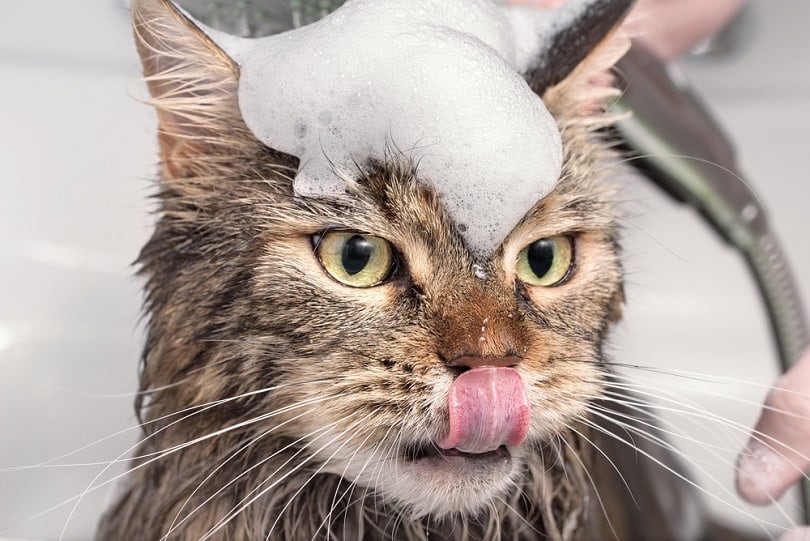
After Bath Care
When you’re done with a bath, you want to follow up with other grooming necessities, too. It’s a good time to pamper your kitty—leaving them fresh and clean.
Brushing
The number of times you brush your cat will depend greatly on their tolerance and coat length. Long-haired cats might require daily brushing. However, you should be able to space out brushing for short-haired cats once a week.
Ear Cleaning
Your cats need to keep their ears clean and tidy to prevent infection. It is imperative to ensure that ears are very dry after baths to avoid any moisture—warm, damp places can cause buildup that can be a breeding ground for bacteria.
Nail Trims
If you are experienced and feel confident, you can give your cat a nail trim. You do have to be very careful, as cutting the nails too short can cause pain and bleeding.
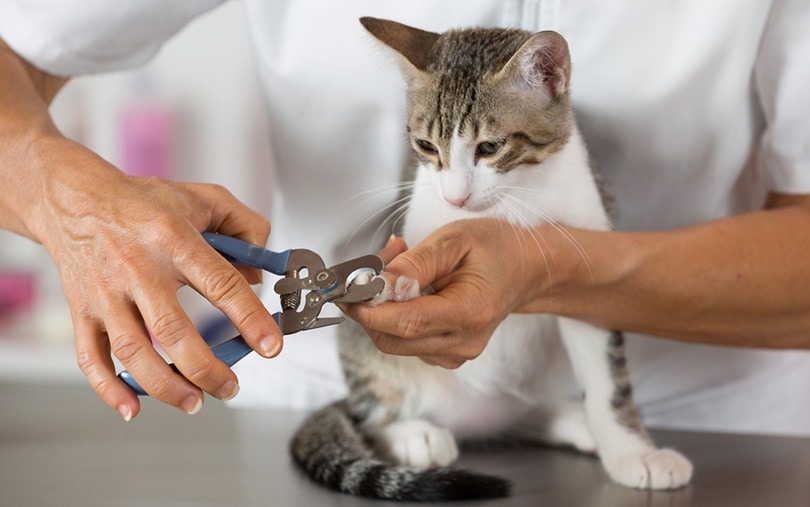
Nail Covers
As an alternative to nail trims, many owners opt for nail covers instead. These small pieces fit over your cat’s nails to prevent the scratching of furniture and other unwanted household objects.
Protect Yourself at Bathtime
Some cats can get a little frisky during bathtime, so taking precautions should be on your to-do list. Make sure you keep your skin covered to prevent clawing. You might also consider thick rubber gloves or bathing gloves to keep a firm layer between the two of you.
 Final Thoughts
Final Thoughts
So, now you know that you should ultimately use your judgment for cat bathing. Some cats need a good scrubbing more frequently than others. A good rule of thumb is to wait at least 6 weeks between baths for any feline.
However, depending on the coat type, the duration may vary slightly. If you have any bathing concerns, reach out to your veterinarian’s office for further advice.
See Also:
- Why Do Cats Like Bathtubs? 10 Likely Reasons!
- How to Wash a Cat Without Shampoo: 8 Great Alternatives
Featured Image Credit: 135pixels, Shutterstock




